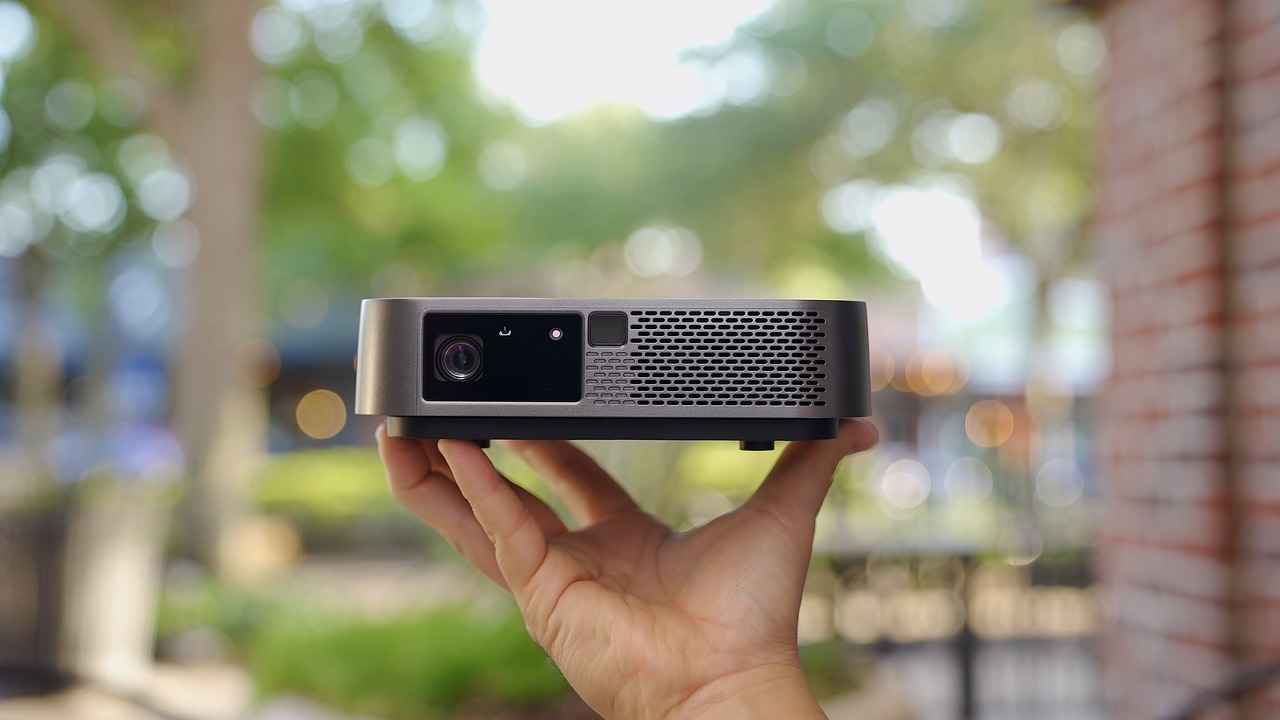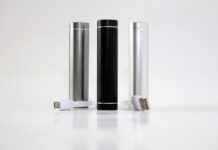As we move into 2025, the demand for smart home devices that enhance energy efficiency is on the rise. These innovative technologies not only help in reducing energy consumption but also contribute to lowering utility costs. This article explores the latest advancements in smart home devices, their benefits, and how they can transform your living space into an energy-efficient environment.
- Smart Thermostats: These devices learn your heating and cooling preferences, adjusting temperatures automatically to save energy.
- Energy Monitoring Systems: Track your energy usage in real-time, allowing you to identify wasteful habits and optimize consumption.
- Smart Lighting Solutions: Control your home’s lighting remotely and set schedules to ensure lights are off when not needed.
- Smart Appliances: Designed to use energy more efficiently, these appliances can significantly lower your energy bills.
- Home Automation Hubs: Integrate various smart devices for seamless control and energy optimization.
- Smart Blinds and Curtains: Automatically adjust to sunlight and temperature, reducing reliance on HVAC systems.
- Energy-Efficient Smart Water Heaters: Optimize heating schedules based on user behavior to minimize energy waste.
- Smart Power Strips: Prevent phantom energy loads by monitoring and controlling multiple devices.
- Solar Energy Solutions: Harness renewable energy through smart solar panels, promoting sustainability.
- Smart HVAC Systems: Utilize advanced algorithms to ensure efficient heating and cooling.
- Smart Irrigation Systems: Monitor weather and soil conditions to conserve water and energy in gardens.
Conclusion: The Future of Energy Efficiency
As technology continues to evolve, the role of smart home devices in enhancing energy efficiency will become increasingly significant. By adopting these innovations, homeowners can not only achieve substantial savings but also contribute to a more sustainable future.
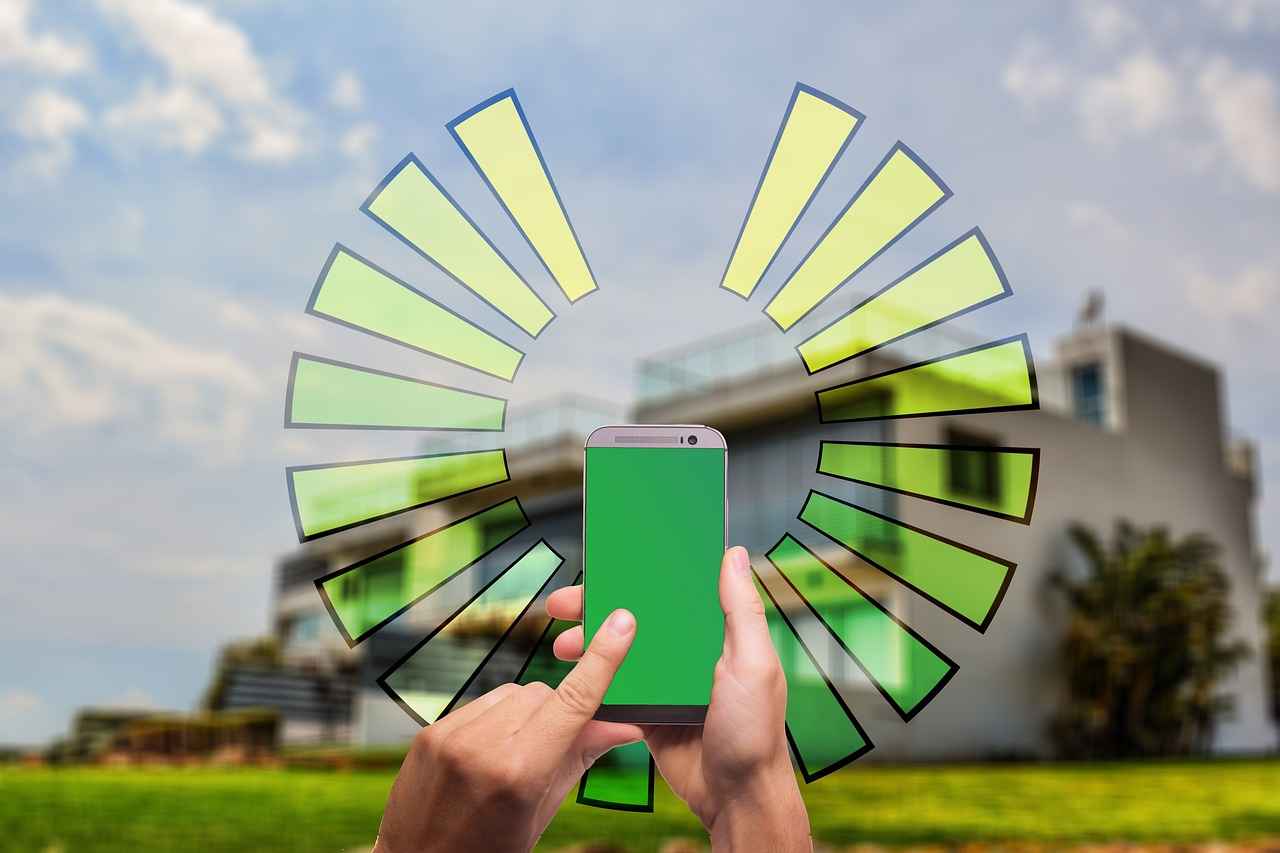
1. Smart Thermostats
Smart thermostats have revolutionized the way we manage heating and cooling in our homes. By utilizing advanced technology, these devices not only learn user preferences but also adapt to changing conditions to optimize energy use.
In 2025, the importance of smart thermostats continues to grow as homeowners seek to enhance energy efficiency. These devices are equipped with machine learning algorithms that analyze user behavior and environmental factors to automatically adjust the temperature settings. This leads to a more comfortable living environment while also significantly reducing energy consumption.
- Energy Savings: Studies have shown that smart thermostats can save homeowners up to 30% on their heating and cooling bills annually. This is achieved by minimizing energy waste during times when the home is unoccupied.
- User-Friendly Interfaces: Most smart thermostats come with intuitive apps that allow users to control their home’s temperature remotely. This feature is particularly useful for adjusting settings on the go.
- Integration with Other Smart Devices: Smart thermostats can seamlessly integrate with other smart home devices, such as smart lights and security systems, creating a fully automated home environment.
Moreover, the installation process for smart thermostats has become increasingly user-friendly. Many models are designed for easy DIY installation, making them accessible to a broader audience.
As we look toward the future, the role of smart thermostats in promoting energy efficiency will only expand. With ongoing advancements in technology, these devices will continue to evolve, offering even more features that cater to the needs of modern homeowners.
In conclusion, investing in a smart thermostat is not just about convenience; it is a step toward a more sustainable future. By optimizing heating and cooling, these devices play a crucial role in reducing energy consumption and lowering utility costs.

2. Energy Monitoring Systems
Energy monitoring systems have become an essential tool for homeowners seeking to manage their energy consumption efficiently. These advanced systems provide real-time tracking of energy usage, enabling users to gain valuable insights into their consumption patterns. By leveraging this data, homeowners can identify wasteful habits and make informed decisions to optimize their energy use.
Energy monitoring systems consist of devices that connect to a home’s electrical system, offering detailed reports on energy usage. These systems can highlight which appliances consume the most energy and when usage peaks occur. This information is crucial for developing strategies to enhance energy efficiency.
- Real-Time Insights: Users receive immediate feedback on their energy consumption, helping them adjust usage habits promptly.
- Cost Savings: By identifying high-energy usage times, homeowners can shift their consumption to off-peak hours, thus reducing energy bills.
- Environmental Impact: Reducing energy consumption contributes to lower carbon footprints, promoting sustainability.
One of the standout features of modern energy monitoring systems is their ability to send real-time alerts. Users are notified of any unusual spikes in energy usage, which can indicate issues such as faulty appliances or unexpected behaviors. This proactive approach allows homeowners to take immediate action to prevent further waste.
Energy monitoring systems also provide access to historical data analysis. By reviewing trends over time, users can better understand their energy consumption patterns and make more informed decisions regarding energy-saving measures. This analysis can assist in budgeting for future energy costs and planning for upgrades to more efficient appliances.
With various energy monitoring devices available on the market, it’s essential to select one that fits your specific needs. Consider factors such as compatibility with existing home systems, ease of use, and the level of detail provided in reports. Popular options include smart plugs, whole-home monitoring systems, and dedicated energy monitors.
In conclusion, energy monitoring systems are invaluable tools for homeowners aiming to enhance energy efficiency. By providing real-time insights, alerts, and historical data analysis, these systems empower users to make smarter energy choices, leading to significant savings and a more sustainable lifestyle.
2.1. Benefits of Energy Monitoring
Understanding the benefits of energy monitoring is crucial for homeowners looking to enhance their energy efficiency. By adopting energy monitoring systems, users can gain valuable insights into their energy consumption, which can significantly influence their energy-saving habits.
One of the primary advantages of these systems is the ability to visualize energy usage. With real-time data displayed through user-friendly interfaces, homeowners can easily see how much energy they are consuming at any given moment. This transparency can lead to a better understanding of energy patterns and help identify areas where energy is being wasted.
Moreover, energy monitoring systems provide real-time alerts for any unusual spikes in energy consumption. This immediate feedback allows users to take action promptly, potentially preventing unnecessary costs and conserving energy. For instance, if a device is left on longer than necessary, homeowners can quickly turn it off, thereby reducing waste.
Another significant benefit is the ability to analyze historical data. By reviewing past energy usage trends, homeowners can make informed decisions about their energy consumption. This analysis can help users identify peak usage times and adjust their habits accordingly, leading to more efficient energy management and better budgeting for future costs.
In addition to these practical insights, energy monitoring systems can also enhance overall home automation. By integrating with other smart devices, these systems allow for coordinated energy-saving measures, such as scheduling appliances to run during off-peak hours when energy rates are lower.
In conclusion, the benefits of energy monitoring extend beyond mere observation. By empowering homeowners with knowledge and tools, these systems facilitate informed decisions that can lead to significant energy savings and a more sustainable lifestyle.
2.1.1. Real-Time Alerts
Real-time alerts from energy monitoring systems are transforming the way homeowners manage their energy consumption. These advanced systems are designed to send immediate notifications when they detect unusual spikes in energy usage, enabling users to take quick action to mitigate waste and reduce costs.
With the rise of smart home technology, energy monitoring systems have become increasingly sophisticated. They not only track energy consumption but also analyze patterns and provide insights that can lead to more informed decisions. When a sudden increase in energy use is detected, users receive alerts via their smartphones or connected devices, allowing them to investigate the cause promptly.
Why are real-time alerts important? The significance of these alerts lies in their ability to prevent unnecessary expenses. For instance, if a user receives a notification about an unexpected spike, they can check for issues such as:
- Appliances left on unintentionally
- Malfunctioning devices consuming excessive power
- Changes in energy usage patterns that need addressing
By acting quickly, homeowners can avoid inflated energy bills and contribute to a more sustainable energy future. Moreover, these alerts often include suggestions for energy-saving practices, further empowering users to optimize their consumption.
In addition to immediate notifications, energy monitoring systems can also provide historical data analysis. This feature allows users to review past usage trends, helping them identify habits that may lead to wasteful consumption. Combining real-time alerts with historical insights creates a comprehensive approach to energy management, making it easier for homeowners to adopt more efficient practices.
In conclusion, real-time alerts from energy monitoring systems are an essential tool for anyone looking to enhance their energy efficiency. By staying informed about energy consumption and addressing issues as they arise, users can save money while promoting a more sustainable lifestyle.
2.1.2. Historical Data Analysis
Analyzing historical data is a critical aspect of effective energy management that allows users to identify and understand trends in energy consumption over time. By examining past usage patterns, homeowners can gain valuable insights that facilitate smarter energy management and improve budgeting for future energy costs.
When users analyze their historical energy data, they can:
- Identify Peak Usage Times: Users can pinpoint when their energy consumption is at its highest, allowing them to adjust habits or shift usage to off-peak hours, potentially saving on energy costs.
- Recognize Seasonal Trends: Understanding how energy usage fluctuates with the seasons helps in planning for heating and cooling needs, ensuring that homes remain comfortable without excessive expenditure.
- Spot Inefficiencies: By reviewing historical data, users can identify periods of unusually high consumption that may indicate inefficiencies or malfunctioning appliances, prompting timely maintenance or upgrades.
- Forecast Future Costs: Historical data provides a solid foundation for predicting future energy expenses, enabling users to create more accurate budgets and financial plans.
Moreover, many energy monitoring systems offer tools that visualize this data, making it easier to digest and act upon. Graphs and charts can highlight trends and anomalies, providing a clear picture of energy usage over time.
In conclusion, leveraging historical data analysis not only empowers users to make informed decisions but also fosters a proactive approach to energy management. This ultimately leads to greater efficiency and cost savings in the long run.
2.2. Popular Energy Monitoring Devices
In today’s world, energy efficiency is a top priority for homeowners looking to reduce their carbon footprint and save on utility bills. Several popular energy monitoring devices are available in the market, each offering unique features tailored to meet different needs. Researching these options can help homeowners choose the best fit for their specific requirements.
- Sense Energy Monitor: This device provides real-time energy usage data, allowing homeowners to track their consumption patterns through a user-friendly app. It also offers insights into which devices are using the most energy.
- Emporia Vue: Known for its affordability, the Emporia Vue allows users to monitor energy usage at both the circuit and whole-home levels. Its app provides detailed breakdowns of energy consumption, helping users identify potential savings.
- TP-Link Kasa Smart Plug: This smart plug not only allows users to control devices remotely but also tracks energy usage. Homeowners can set schedules to turn devices on or off, reducing unnecessary energy consumption.
- Neurio Home Energy Monitor: Neurio offers a comprehensive energy monitoring solution that connects to the home’s electrical panel. It provides insights into energy usage trends and can even predict future energy costs.
- Wattvision: This device provides real-time energy monitoring and integrates with smart home systems. Users can access their data via a web interface or mobile app, making it easy to track and manage energy consumption.
When considering an energy monitoring device, homeowners should evaluate their specific needs, such as whether they want detailed appliance-level monitoring or a more general overview of their energy use. By understanding the features and benefits of each device, users can make informed decisions that align with their energy-saving goals.
In conclusion, investing in an energy monitoring device can lead to substantial savings and promote a more sustainable lifestyle. With the right device, homeowners can gain valuable insights into their energy consumption and take proactive steps to reduce waste.
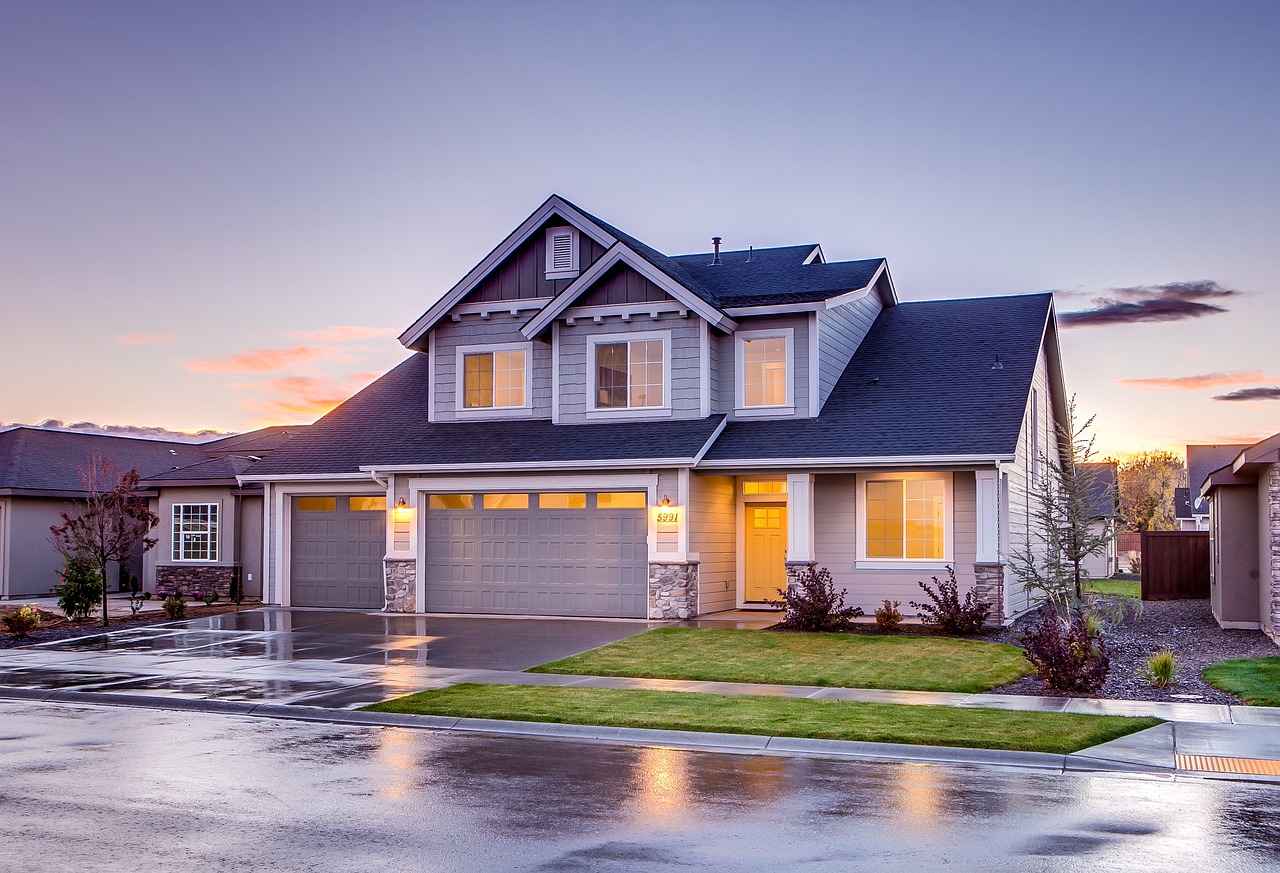
3. Smart Lighting Solutions
Smart Lighting Solutions have revolutionized the way we manage our home environments. These innovative systems allow users to control their lighting remotely, providing convenience and energy efficiency. By leveraging smart technology, homeowners can program their lights to turn off automatically when not in use, significantly reducing energy consumption.
Smart lighting offers numerous advantages that go beyond mere convenience. Here are some key benefits:
- Energy Savings: By automating lighting schedules, homeowners can ensure that lights are only on when needed, leading to substantial reductions in energy bills.
- Enhanced Security: Smart lighting can simulate occupancy by turning lights on and off at scheduled times, deterring potential intruders.
- Customization: Users can personalize their lighting preferences, adjusting brightness and color to suit different moods and occasions.
- Integration: Smart lighting systems can easily integrate with other smart home devices, creating a cohesive and efficient home automation experience.
When selecting smart bulbs, it’s essential to understand the various types available:
- LED Smart Bulbs: These are energy-efficient and long-lasting, making them a popular choice for most households.
- Smart Light Strips: Ideal for accent lighting, these flexible strips can be placed in various locations for creative lighting solutions.
- Smart Floodlights: Perfect for outdoor use, these can enhance security and ambiance in gardens or patios.
To begin your journey into smart lighting, consider the following steps:
- Assess Your Needs: Determine which areas of your home would benefit most from smart lighting.
- Choose Compatible Products: Ensure that the smart bulbs or systems you select are compatible with your existing home automation setup.
- Installation: Follow the manufacturer’s instructions for installation, which is typically straightforward and can often be done without professional help.
In conclusion, smart lighting solutions not only enhance the convenience of managing home lighting but also contribute significantly to energy efficiency. By understanding the benefits and types of smart lighting available, homeowners can make informed decisions that lead to both cost savings and improved home security.
3.1. Benefits of Smart Lighting
Smart lighting has revolutionized the way we illuminate our homes, offering a multitude of benefits that go beyond mere aesthetics. As technology continues to advance, the integration of smart lighting systems has become increasingly popular among homeowners looking for convenience, security, and energy savings.
- Convenience: One of the primary advantages of smart lighting is the ability to control your lights remotely. Whether you are at home or away, you can use your smartphone or voice commands to adjust the brightness, color, and timing of your lights. This feature is particularly useful for creating the perfect ambiance for any occasion.
- Enhanced Security: Smart lighting systems can be programmed to simulate your presence at home by turning lights on and off at random intervals. This deterrent effect can help protect your home from potential intruders, providing peace of mind when you’re away.
- Energy Savings: By automating your lighting, you can significantly reduce energy consumption. Smart bulbs can be set to turn off when you leave a room or adjust their brightness based on the time of day or natural light levels. This not only lowers your electricity bill but also contributes to a more sustainable lifestyle.
- Customization: Smart lighting allows users to create personalized lighting scenes that cater to different activities, such as reading, watching movies, or entertaining guests. This flexibility enhances the overall living experience and allows for a tailored environment.
- Integration with Other Smart Devices: Smart lighting can seamlessly integrate with other smart home devices, such as thermostats and security systems. For example, your lights can automatically turn on when your security system detects motion, enhancing overall safety.
In conclusion, the benefits of smart lighting extend far beyond simple illumination. By investing in these innovative systems, homeowners can enjoy increased convenience, enhanced security, and substantial energy savings, all while contributing to a more sustainable future.
3.2. Types of Smart Bulbs
Types of Smart Bulbs play a crucial role in modern energy-efficient homes, offering various features tailored to meet different preferences and needs. Understanding the distinctions among these bulbs can significantly aid users in selecting the most suitable and energy-efficient options for their households.
- LED Smart Bulbs: These bulbs are known for their energy efficiency and long lifespan. Consuming up to 80% less energy than traditional incandescent bulbs, they are available in various colors and brightness levels, making them ideal for any room.
- Smart RGB Bulbs: Offering a wide spectrum of colors, these bulbs allow users to customize their lighting to match their mood or decor. They can be controlled via smartphone apps, enabling users to set schedules and scenes effortlessly.
- Smart White Bulbs: These bulbs provide adjustable white light, ranging from warm to cool tones. They are perfect for creating different ambiances and can help in tasks that require focused lighting, such as reading or cooking.
- Smart Dimmable Bulbs: With the ability to adjust brightness levels, these bulbs are perfect for creating the right atmosphere in any setting. Users can easily set the mood for a dinner party or relax with softer light in the evening.
- Smart Floodlights: Ideal for outdoor spaces, these bulbs provide bright, wide-angle lighting and can be controlled remotely. They enhance security around the home and can be programmed to turn on at specific times.
- Smart Plug-in Bulbs: These bulbs can be plugged into existing fixtures, making them a convenient option for renters or those who want to upgrade their lighting without extensive installation. They often come with features like scheduling and remote control.
By understanding the various types of smart bulbs available, homeowners can make informed decisions that not only enhance their living spaces but also contribute to energy efficiency and cost savings.
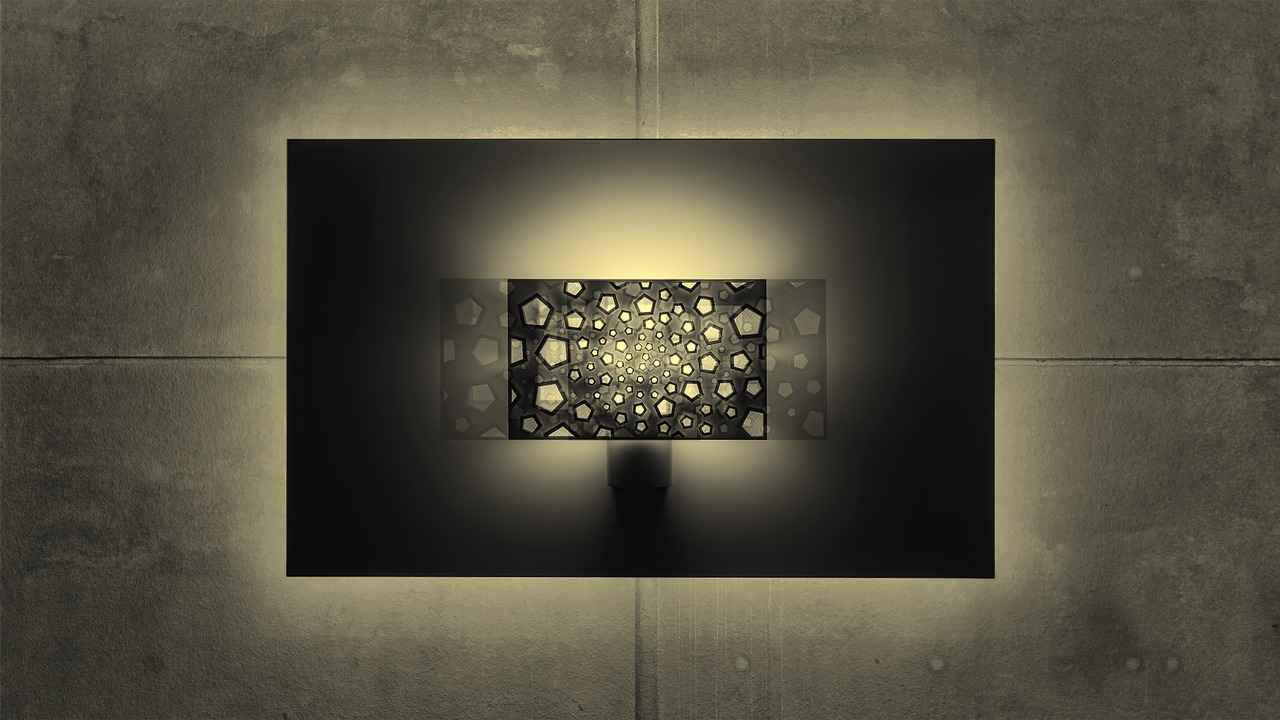
4. Smart Appliances
Smart Appliances are revolutionizing the way we interact with our homes by combining technology with energy efficiency. In 2025, these devices not only enhance convenience but also play a vital role in reducing energy consumption without compromising performance.
One of the key features of smart appliances is their ability to optimize energy use. These devices are equipped with advanced sensors and algorithms that adjust their operation based on user habits and environmental conditions. For example, a smart refrigerator can monitor its internal temperature and adjust cooling levels, ensuring food freshness while minimizing energy usage.
Energy-Efficient Settings are another hallmark of smart appliances. Many models come with pre-programmed energy-saving modes that allow users to reduce their energy consumption during peak hours. This not only helps in lowering utility bills but also contributes to a more sustainable lifestyle.
- Smart Washers and Dryers: These appliances can schedule wash and dry cycles during off-peak hours, saving energy and money.
- Smart Ovens: Equipped with features that allow remote monitoring and control, smart ovens can optimize cooking times and temperatures.
- Smart Dishwashers: These devices can adjust water usage based on the load size, ensuring efficient cleaning with minimal water and energy.
Moreover, smart appliances often integrate with home automation systems, enabling users to manage multiple devices from a single interface. This connectivity not only enhances user experience but also ensures that appliances work together efficiently to reduce energy waste.
In conclusion, investing in smart appliances is a step towards a greener future. By embracing these technologies, homeowners can enjoy the benefits of modern convenience while actively participating in energy conservation efforts.

5. Home Automation Hubs
Home automation hubs are becoming increasingly essential in modern households, acting as the central command for various smart devices. These hubs integrate a multitude of devices, such as smart lights, thermostats, and security systems, enabling seamless control and monitoring from a single interface. This integration not only enhances convenience but also promotes energy efficiency by allowing devices to communicate and operate in harmony.
One of the primary advantages of home automation hubs is their ability to optimize energy usage. By coordinating the operation of multiple devices, these hubs can ensure that energy is consumed more efficiently. For instance, when a smart thermostat detects that no one is home, it can signal smart blinds to close, reducing the need for air conditioning and ultimately lowering energy bills.
- Convenience: Users can control all their devices from a single app, reducing the need to manage each device separately.
- Energy Savings: By automating schedules and settings, users can significantly cut down on unnecessary energy consumption.
- Enhanced Security: Home automation hubs can integrate security cameras and alarms, allowing for comprehensive monitoring and alerts.
Selecting the appropriate home automation hub is crucial for maximizing its benefits. Factors to consider include:
- Device Compatibility: Ensure that the hub supports all your existing smart devices.
- User Interface: A user-friendly interface can make controlling your devices much easier.
- Scalability: Choose a hub that allows for future expansion as you add more devices to your home.
In conclusion, home automation hubs are pivotal in creating a smart home environment that is both efficient and user-friendly. By integrating various devices, they not only simplify control but also enhance energy efficiency, contributing to significant cost savings over time. As technology continues to evolve, these hubs will likely become even more sophisticated, offering homeowners greater control and efficiency in their daily lives.
5.1. Benefits of Home Automation
Home automation has revolutionized the way we interact with our living spaces, offering a myriad of benefits that enhance both convenience and energy efficiency. By integrating smart technology into homes, users can enjoy a seamless experience that not only simplifies daily tasks but also contributes to significant energy savings.
- Convenience: One of the primary advantages of home automation is the ability to control devices remotely through smartphones or voice commands. This convenience means that users can adjust settings for heating, lighting, and appliances from anywhere, ensuring their home is always comfortable and secure.
- Energy Efficiency: Automated systems can optimize energy use by adjusting settings based on user habits and preferences. For instance, smart thermostats can learn when to heat or cool a home, reducing unnecessary energy consumption and lowering utility bills.
- Scheduled Operations: Home automation allows users to set schedules for various devices. Lights can turn off automatically when no one is home, and appliances can run during off-peak hours, further enhancing energy efficiency.
- Enhanced Security: Smart home systems can improve security through automated lighting and surveillance features. Homeowners can program lights to mimic their presence when away, deterring potential intruders and providing peace of mind.
- Real-Time Monitoring: Many home automation systems offer real-time monitoring of energy consumption. This feature enables users to identify energy waste and make informed decisions to reduce their carbon footprint.
In summary, the benefits of home automation extend far beyond mere convenience. By embracing this technology, homeowners can achieve a more sustainable lifestyle while enjoying enhanced comfort and security.
5.2. Choosing the Right Hub
Choosing the Right Home Automation Hub is crucial for maximizing the benefits of your smart home devices. A well-selected hub not only facilitates seamless integration but also enhances the overall efficiency of your home automation system.
When considering a home automation hub, it is essential to evaluate compatibility with your existing devices. Many hubs support a variety of protocols such as Zigbee, Z-Wave, and Wi-Fi. Therefore, understanding which protocols your current devices use will guide you in selecting a hub that can manage them effectively.
- Research Compatibility: Check the specifications of your smart devices to ensure they can connect with the hub you are considering.
- User Preferences: Consider what features are most important to you, such as voice control, mobile app accessibility, or automation capabilities.
- Future Expansion: Choose a hub that allows for future devices to be added easily, accommodating your evolving smart home needs.
In addition to compatibility, user preferences play a significant role in the selection process. Some users may prioritize ease of use, while others may seek advanced features for customization. It’s advisable to read reviews and seek recommendations from other users to gain insights into their experiences with different hubs.
Moreover, consider the ecosystem that the hub belongs to. Some hubs work better within specific ecosystems, such as Apple HomeKit, Google Home, or Amazon Alexa. Choosing a hub that aligns with your preferred ecosystem can significantly enhance your smart home experience.
Finally, conducting thorough research is vital. Look for expert reviews, comparisons, and user testimonials to ensure that you make an informed decision. This diligence will help you find a hub that not only meets your current needs but also grows with your smart home as technology advances.
In conclusion, selecting the right home automation hub is a critical step towards achieving a fully integrated and efficient smart home. By considering compatibility, user preferences, and conducting thorough research, you can ensure a smooth integration of smart technologies into your daily life.
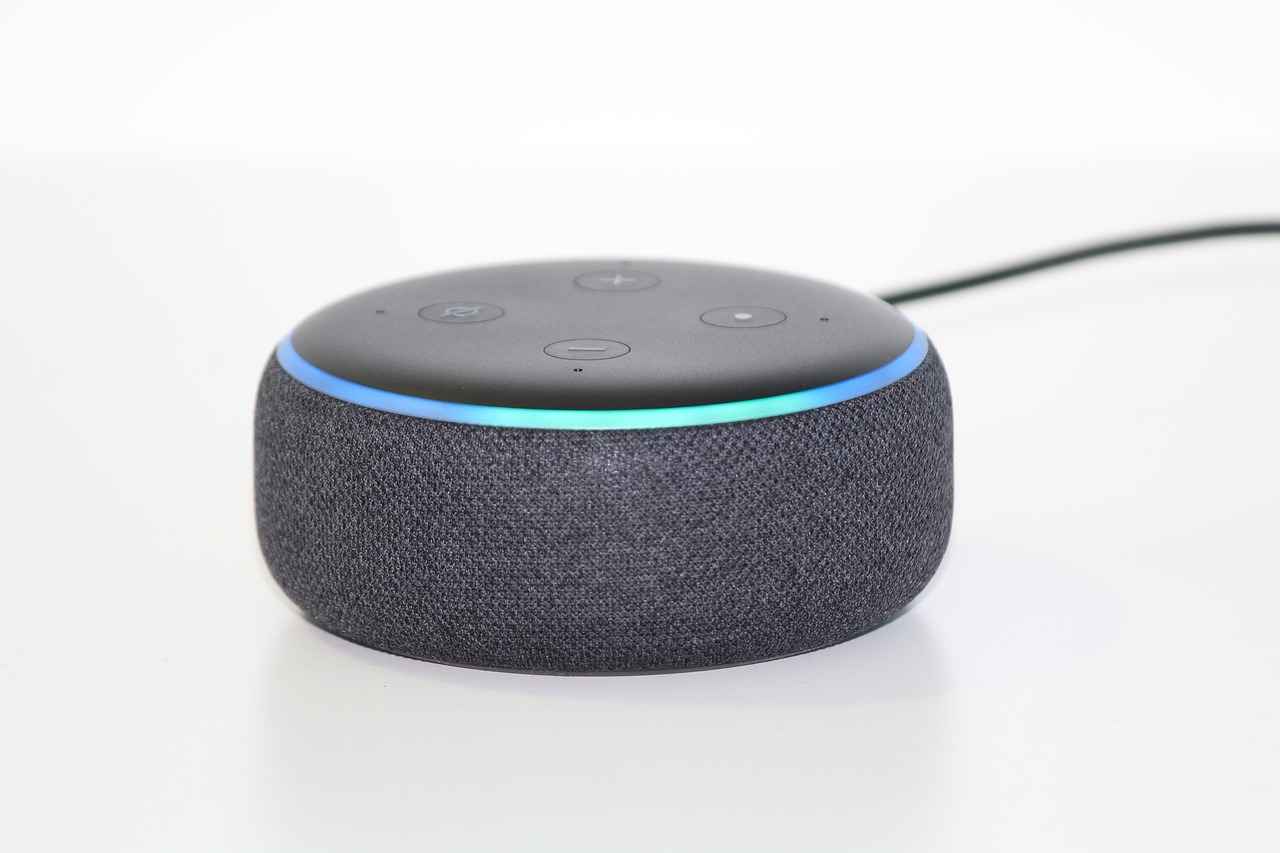
6. Smart Blinds and Curtains
Smart Blinds and Curtains are revolutionizing the way we manage our indoor environments. These innovative window treatments automatically adjust to environmental conditions, such as sunlight and temperature, thereby enhancing energy efficiency and comfort within our homes.
By utilizing built-in sensors and smart technology, smart blinds and curtains can open or close based on the intensity of sunlight streaming into a room. This feature not only helps to regulate indoor temperatures but also minimizes the need for heating and cooling systems, leading to significant energy savings. For instance, during the summer months, these smart solutions can block excessive heat, reducing the reliance on air conditioning systems, while in winter, they can allow sunlight to warm the room naturally.
- Energy Savings: By adjusting to natural light, smart blinds can significantly lower energy costs.
- Enhanced Comfort: They create a more stable indoor climate, making living spaces more comfortable.
- Convenience: Many models can be controlled via smartphone apps or integrated with home automation systems for seamless operation.
Moreover, these smart window coverings often come with programmable settings, allowing homeowners to create schedules that align with their daily routines. For example, you can set your smart blinds to open at sunrise and close at sunset, ensuring your home is always optimally lit and comfortable.
In addition to their practical benefits, smart blinds and curtains also contribute to the aesthetic appeal of a home. Available in various styles, colors, and materials, they can complement any interior design while providing the functionality of modern technology.
In conclusion, smart blinds and curtains represent a significant advancement in home automation, combining technology and design to improve energy efficiency and comfort. As more homeowners become aware of their benefits, these smart solutions are likely to become a staple in energy-efficient homes of the future.
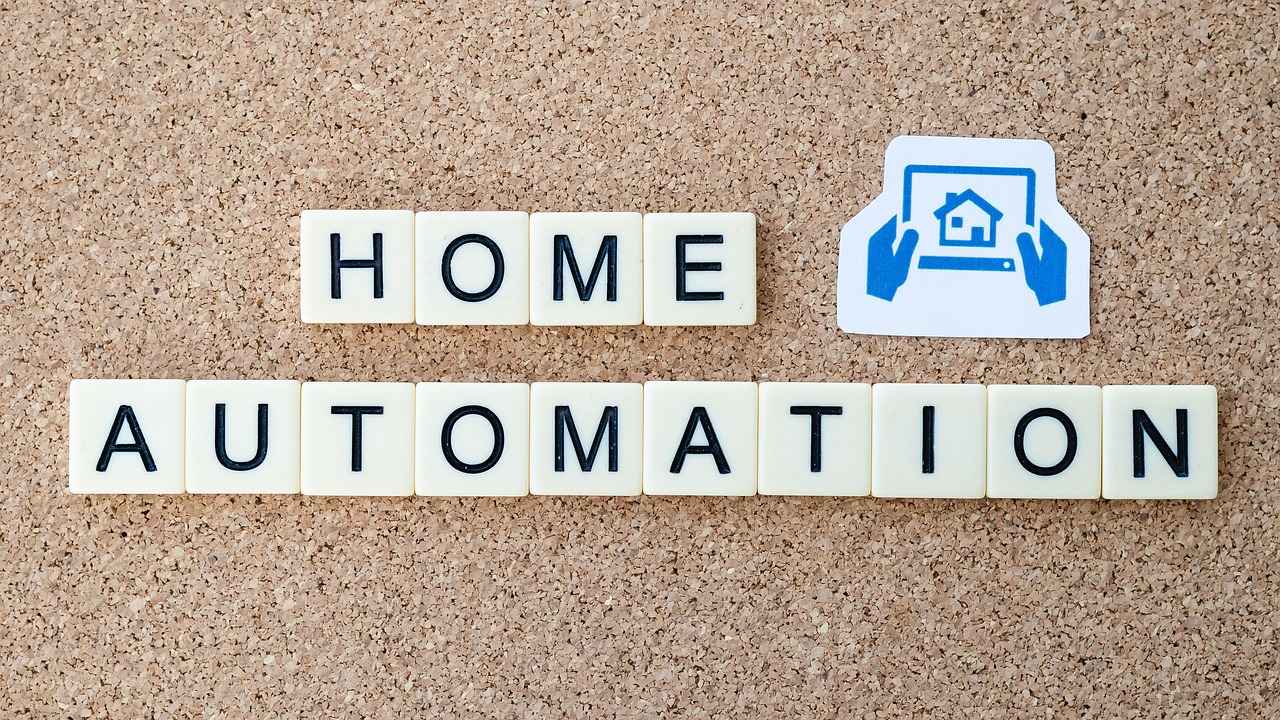
7. Energy-Efficient Smart Water Heaters
In today’s world, where energy conservation is more crucial than ever, energy-efficient smart water heaters have emerged as a vital solution for homeowners. These innovative devices not only provide hot water on demand but also optimize energy usage, leading to significant cost savings and reduced environmental impact.
Smart water heaters utilize advanced technology to analyze user behavior and adjust their heating schedules accordingly. By learning when hot water is most frequently used, these heaters can preheat water during off-peak hours when energy costs are lower, ensuring that hot water is readily available when needed. This proactive approach minimizes energy consumption, making them an excellent choice for those looking to enhance their home’s energy efficiency.
One of the standout features of smart water heaters is their ability to connect to home automation systems. This integration allows users to monitor and control their water heater remotely via smartphone apps. Homeowners can receive real-time updates on energy usage, set schedules, and even receive alerts for maintenance needs, ensuring optimal performance and longevity of the unit.
- Cost Savings: By optimizing heating schedules, smart water heaters can significantly lower monthly utility bills.
- Environmental Benefits: Reduced energy consumption leads to a smaller carbon footprint, contributing to a more sustainable future.
- Convenience: Remote monitoring and control capabilities provide users with ease and peace of mind.
In conclusion, energy-efficient smart water heaters represent a smart investment for homeowners aiming to reduce their energy consumption and costs. With their ability to adapt to user habits and integrate with smart home systems, they offer both efficiency and convenience. As technology continues to evolve, these devices are poised to become a staple in energy-conscious households.

8. Smart Power Strips
Smart Power Strips are becoming increasingly popular as a solution for energy efficiency in modern households. These innovative devices not only monitor energy usage but also provide users with the ability to control multiple devices simultaneously. By preventing phantom loads—the energy consumed by devices when they are plugged in but not in use—smart power strips can significantly reduce overall energy consumption.
One of the most notable features of smart power strips is their ability to identify which devices are drawing power. This is particularly useful for electronics that remain in standby mode, such as televisions and gaming consoles. By cutting off power to these devices when they are not in use, homeowners can see a noticeable decrease in their energy bills.
- Energy Monitoring: Many smart power strips come equipped with energy monitoring capabilities, allowing users to track their energy consumption in real time. This feature can help identify which devices are the biggest energy hogs.
- Remote Control: With the integration of smart home technology, users can control their smart power strips remotely via smartphone apps. This means you can turn off devices from anywhere, ensuring that you never leave a device consuming power unnecessarily.
- Scheduling: Smart power strips often allow for scheduling, enabling users to set times for devices to turn on or off automatically. This feature is particularly beneficial for items like lamps or chargers.
In addition to these features, many smart power strips are designed to be user-friendly, with straightforward installation processes and intuitive interfaces. They can easily fit into existing setups without requiring significant changes or additional equipment.
Overall, investing in a smart power strip is a practical step towards enhancing energy efficiency in the home. Not only do they help reduce energy waste, but they also empower homeowners to take control of their energy usage, leading to both environmental benefits and cost savings.
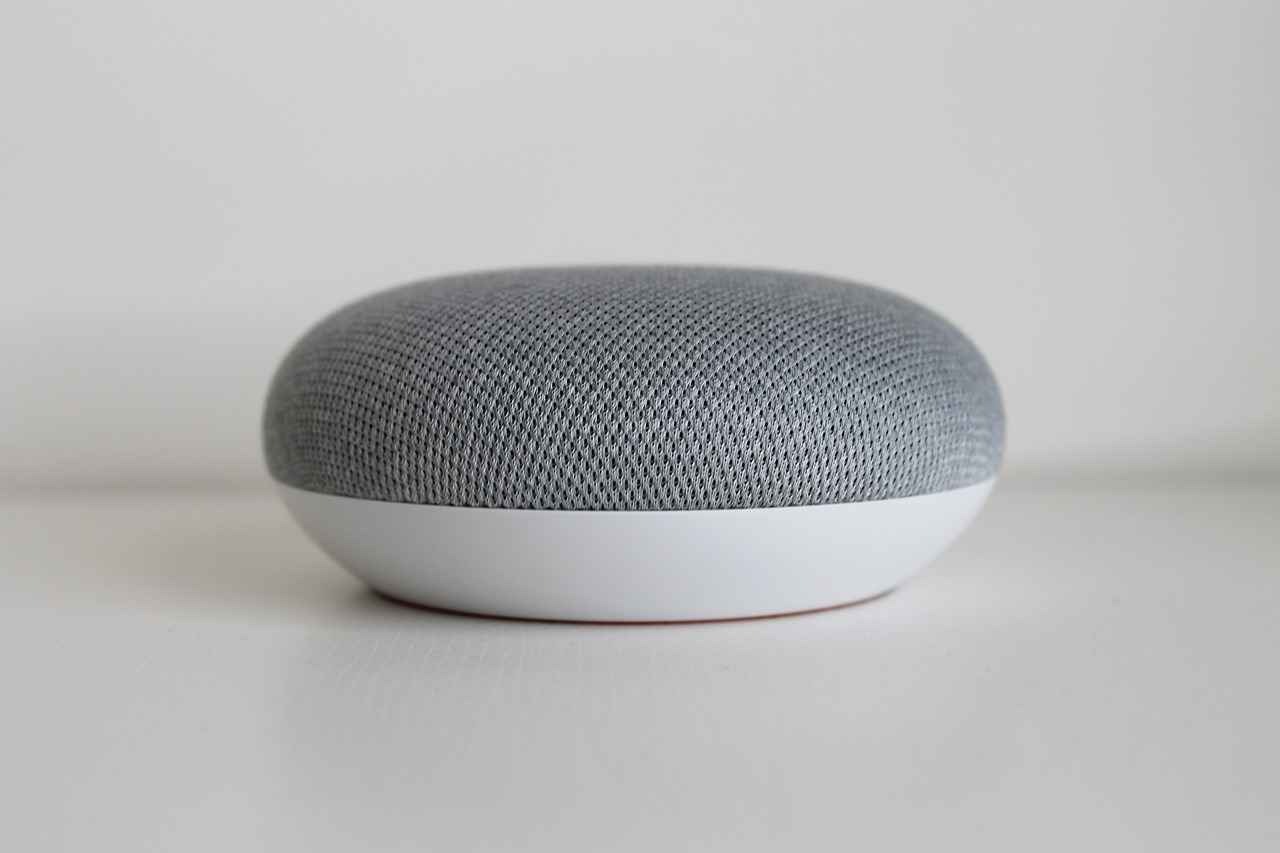
9. Solar Energy Solutions
In recent years, solar energy solutions have gained immense popularity as a sustainable alternative for powering homes. Among these solutions, smart solar panels stand out for their innovative technology and efficiency. These panels not only harness sunlight but also integrate seamlessly with smart home systems, optimizing energy usage and reducing reliance on traditional energy sources.
Solar energy systems offer numerous benefits that extend beyond just environmental impact:
- Renewable Energy Source: Solar power is abundant and renewable, making it a viable long-term energy solution.
- Cost Savings: By generating your own electricity, homeowners can significantly lower their utility bills, especially during peak demand periods.
- Energy Independence: Utilizing solar energy reduces dependence on fossil fuels and enhances energy security.
- Increased Property Value: Homes equipped with solar energy systems often see an increase in property value, making them a wise investment.
Moreover, the integration of smart technology allows for enhanced monitoring and control:
- Real-Time Monitoring: Homeowners can track energy production and consumption through mobile apps, allowing for informed energy management.
- Automated Adjustments: Smart solar systems can adjust their energy output based on real-time weather conditions, maximizing efficiency.
As the demand for renewable energy continues to rise, investing in solar energy solutions is not just a trend but a necessary step towards a sustainable future. With advancements in technology, smart solar panels are becoming more accessible and affordable, making it easier for homeowners to transition to clean energy.
In conclusion, adopting solar energy solutions is a proactive way to contribute to environmental sustainability while enjoying long-term financial benefits. As we move towards a greener future, integrating these systems into our homes will play a crucial role in reducing our carbon footprint and promoting energy savings.
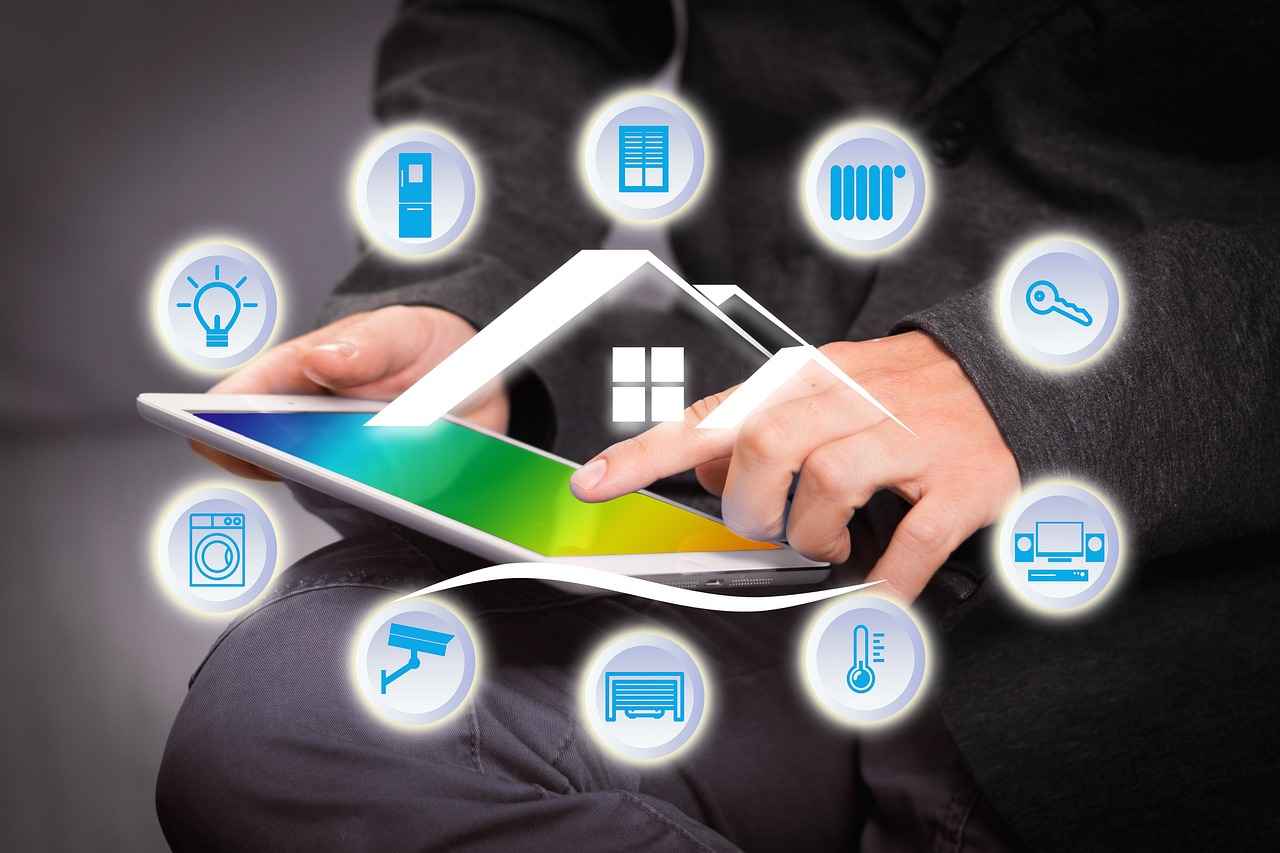
10. Smart HVAC Systems
Smart HVAC Systems are revolutionizing the way we manage indoor climates, providing unparalleled comfort while promoting energy efficiency. These advanced systems utilize sophisticated algorithms and machine learning to analyze user preferences and environmental factors, ensuring optimal heating and cooling performance in homes.
By continuously monitoring indoor temperatures, humidity levels, and even occupancy patterns, smart HVAC systems can adjust settings automatically. This dynamic adaptability not only enhances comfort but also significantly reduces energy consumption and costs. Here are some key features and benefits of these innovative systems:
- Energy Efficiency: Smart HVAC systems optimize energy use by adjusting heating and cooling based on real-time data, which can lead to savings of up to 30% on energy bills.
- User Preferences: These systems learn from user behavior, allowing for personalized climate control. For example, they can pre-cool or pre-heat spaces based on when occupants are typically home.
- Remote Access: Homeowners can control their HVAC systems remotely via smartphone apps, enabling adjustments from anywhere. This feature is particularly useful for managing energy use when away from home.
- Integration with Smart Home Devices: Smart HVAC systems can seamlessly integrate with other smart devices, such as smart thermostats and sensors, creating a cohesive smart home ecosystem.
- Maintenance Alerts: These systems can send alerts for maintenance needs, ensuring that HVAC units operate efficiently and prolonging their lifespan.
In conclusion, adopting a smart HVAC system not only enhances the comfort of living spaces but also contributes significantly to energy conservation. As technology continues to advance, these systems will become increasingly sophisticated, offering even greater efficiency and user satisfaction. Investing in a smart HVAC system today is a step towards a more sustainable and cost-effective future.
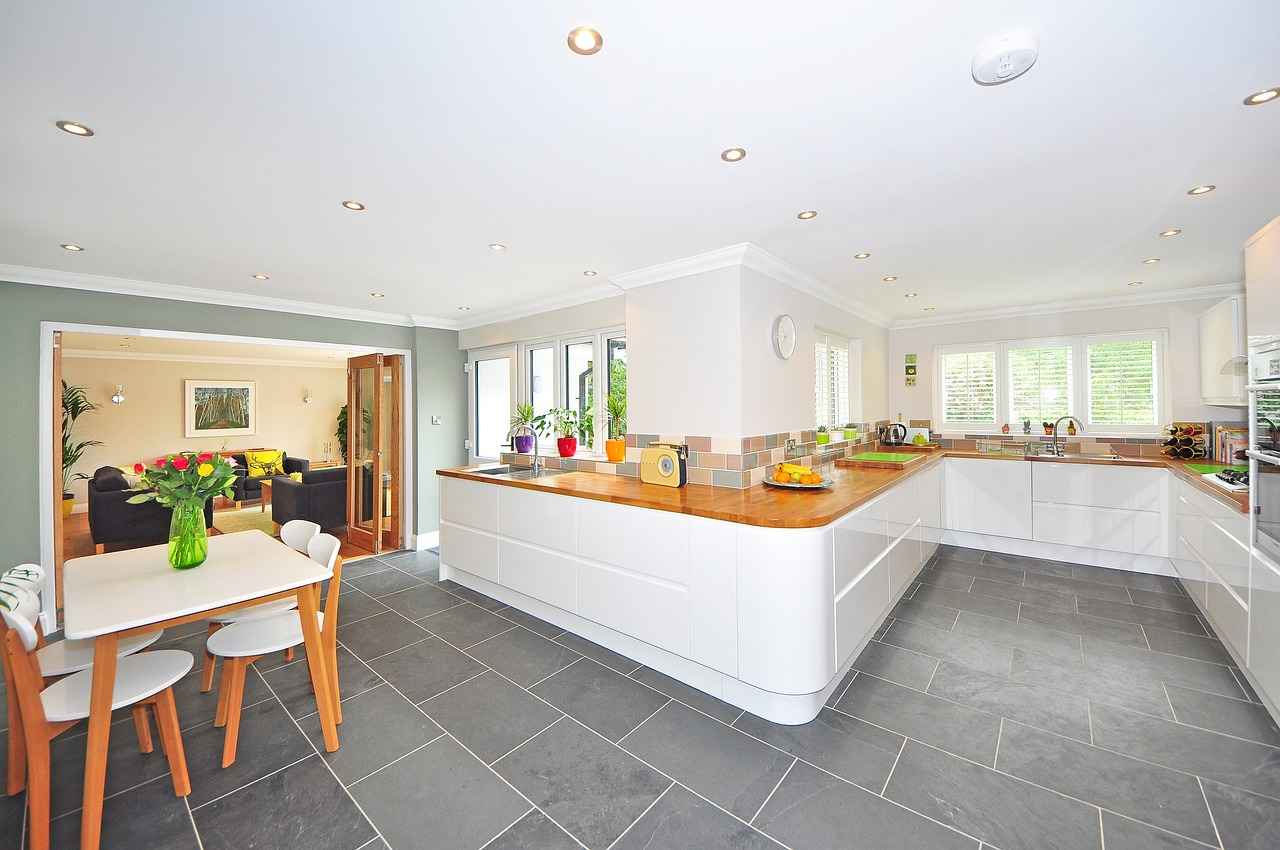
11. Smart Irrigation Systems
Smart Irrigation Systems are revolutionizing the way we manage water resources in our gardens and lawns. By integrating advanced technology, these systems not only monitor weather conditions but also assess soil moisture levels, ensuring that water is used efficiently and effectively.
The primary goal of smart irrigation systems is to minimize water waste while maintaining the health and aesthetics of your landscape. Traditional irrigation methods often lead to overwatering, which can cause plant stress and contribute to water scarcity. In contrast, smart systems utilize sensors and automated controls to deliver the precise amount of water needed based on real-time data.
- Weather Monitoring: Smart irrigation systems are equipped with weather sensors that track local climate conditions. This feature allows the system to adjust watering schedules based on rainfall, temperature, and humidity, ensuring optimal water usage.
- Soil Moisture Sensors: These sensors measure the moisture content in the soil, enabling the system to water only when necessary. This not only conserves water but also promotes healthier plant growth.
- Remote Control: Many smart irrigation systems can be controlled via smartphone apps, allowing homeowners to manage their watering schedules from anywhere. This convenience ensures that gardens receive the attention they need, even when homeowners are away.
Implementing a smart irrigation system can lead to significant water conservation and reduced utility costs. Studies suggest that homeowners can save up to 50% on water usage by adopting these technologies. Additionally, by optimizing water application, plants can thrive, leading to lush and vibrant landscapes.
In conclusion, smart irrigation systems not only promote sustainable water use but also enhance the overall health of your garden. As we move towards a more eco-conscious society, these innovative solutions represent a crucial step in conserving our precious water resources while maintaining beautiful outdoor spaces.

12. Conclusion: The Future of Energy Efficiency
As we look ahead to the future of energy efficiency, it is evident that smart home devices will play an increasingly vital role in transforming how we manage energy consumption in our households. These innovative technologies are not just about convenience; they represent a significant shift towards sustainability and cost savings.
The integration of smart technology into our homes allows for real-time monitoring and control of energy usage. This means that homeowners can easily track their energy consumption patterns, identify areas of waste, and make informed decisions to optimize their usage. For instance, smart thermostats can learn your schedule and preferences, adjusting the temperature automatically to ensure comfort while minimizing energy expenditure.
Moreover, energy monitoring systems provide valuable insights into consumption habits, enabling users to visualize their energy use. By understanding when and where energy is being consumed, homeowners can implement strategies to reduce waste. This proactive approach not only leads to lower utility bills but also contributes to a more sustainable future.
In addition to monitoring, smart lighting solutions and smart appliances are making significant strides in energy efficiency. These devices can be programmed to operate only when needed, ensuring that energy is not wasted. For example, smart bulbs can be set to turn off automatically when no one is home, while smart appliances can run during off-peak hours when energy costs are lower.
As we embrace these technologies, the potential for energy savings becomes even more pronounced. Home automation hubs can integrate various smart devices, allowing for seamless control and optimization of energy use throughout the home. This interconnectedness not only enhances convenience but also maximizes energy efficiency.
In conclusion, the future of energy efficiency is bright, thanks to the continuous evolution of smart home devices. By adopting these innovations, homeowners can achieve significant savings while contributing to a more sustainable environment. The journey towards a more energy-efficient future is not just a trend; it is a necessary step towards responsible living.
Frequently Asked Questions
- What are smart thermostats and how do they save energy?
Smart thermostats learn your heating and cooling preferences, adjusting temperatures automatically to optimize energy use. By using these devices, you can significantly reduce your energy bills while maintaining a comfortable home environment.
- How do energy monitoring systems work?
Energy monitoring systems track your home’s energy consumption in real-time. They provide insights into usage patterns, helping you identify wasteful habits and make adjustments for better efficiency.
- What benefits do smart lighting solutions offer?
Smart lighting allows you to control your lights remotely, set schedules, and automate lighting based on your daily routine. This not only enhances convenience but also leads to substantial energy savings.
- Can smart appliances really lower my utility bills?
Absolutely! Smart appliances are designed to optimize energy usage without compromising performance. They often feature energy-efficient settings that can lead to lower utility costs over time.
- What is a home automation hub?
A home automation hub connects and controls various smart devices in your home. It enables seamless communication between devices, optimizing their performance and energy efficiency.
- How do smart blinds and curtains contribute to energy efficiency?
Smart blinds and curtains automatically adjust based on sunlight and temperature, helping to regulate your indoor climate. This reduces the need for heating and cooling, ultimately saving energy.

